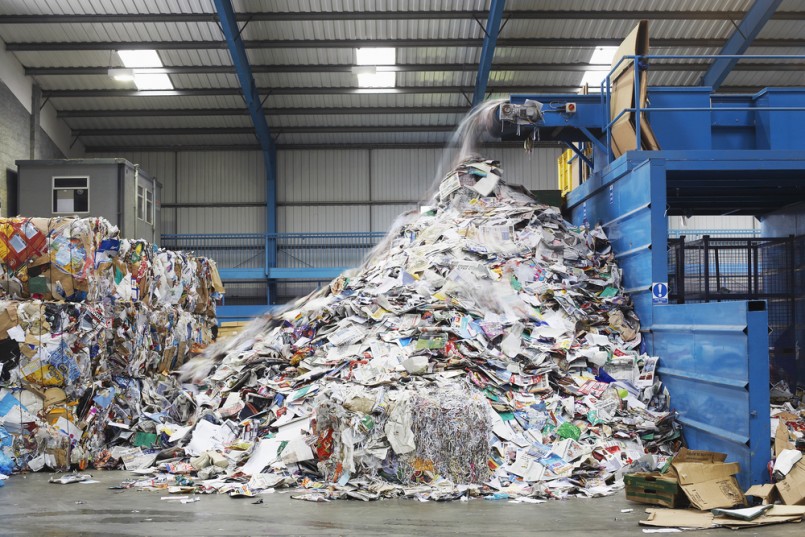Environment
We’re recycling too much, and we’re doing it wrong

Image: Shutterstock/bikeriderlondon
We’re recycling too much, and we’re doing it wrong
We may be jeopardizing the earth by driving gas-guzzling cars everywhere, but at least we can take comfort in the fact that we’re taking steps in the right direction with our worldwide recycling efforts. If you’re separating your paper from your plastic, you can pat yourself on the back and be sure that you’re at least doing something to preserve this big blue ball we call home, right?
Wrong. While there’s nothing inherently wrong with recycling itself, recent insight into our current system of recycling raises more than a few troubling questions of just how much good we’re doing with our global efforts to reduce and reuse.
In fact, we may be doing harm to our environment and our economy. Local governments typically take responsibility for an area’s recycling efforts, making a profit that goes back into other programs when the market for recycled goods is favorable. Conversely, they lose money on their efforts when the market turns against them.
And they can lose a lot of money in those times, because recycling is a costly process, requiring a significant amount of labor, machinery and energy—double what is required to dispose of materials in landfills. Business Insider reports the losses on recycling are worsening due to recent drops in prices for recycled plastic, which governments have been able to sell to break even in the past. The resulting economic and budgetary concerns of their recycling programs throw our entire current system into question.
But let’s go beyond the economics, since our efforts should be targeted primarily towards preserving the environment. It turns out what we’re doing isn’t so great for the environment either.
Every recycled material—from aluminum and glass to paper and plastic—has a unique value as a commodity due to the regularity of the material in the natural world. They also take variable amounts of labor and energy to recycle, a process that can become difficult and even leave a considerable carbon footprint.
So recycling some materials carries a cost that affects both the earth and the pocketbook, causing more economic and environmental harm than the recycled product is worth. This conclusion is supported by a recent study by economist Thomas Kinnaman that evaluated the benefits and cost in energy and cash of recycling each distinct material based on the open data from Japan’s programs.
His eventual result was that the optimal rate of recycling for most nations is roughly 10% of goods, a finding that flies in the face of our common assumption that it’s best to recycle just about everything.
“Although the optimal overall recycling rate may be only 10%, the composition of that 10% should contain primarily aluminum, other metals and some forms of paper, notably cardboard and other source[s] of fiber,” Kinnaman wrote. “Optimal recycling rates for these materials may be near 100% while optimal rates of recycling plastic and glass might be zero.”
There are, of course, reservations many in the scientific and recycling community have regarding Kinnaman’s assertions, especially about plastic. His claim that the environmental aspect of creating new plastic is minimal ignores the issue that the material never truly decomposes and instead persists in the environment forever.
Nonetheless, in spite of certain reservations, the conclusions of the recent study echo many other previous findings and have been supported by many environmental and waste management experts who see the flaws in our current efforts to preserve our environment through recycling.
To correct our current path and make it more in line with Kinnaman’s recommendations, many economists and activists believe the solution is to incorporate such findings into the process, applying this knowledge to the disposal and reusing of every distinct material as well as moving the responsibility for the system from the hands of local government into the hands of manufacturers.
The basic idea behind that last bit is to reduce the economic strain the recycling process can place on the modest budgets of local governments when the commodity market is unfavorable, as it has been the past few years. While governments expanded their recycling efforts three years ago, once the market soured many became skeptical about recycling.
EPR laws, or extended producer responsibility laws, are ones that would require manufacturers to take ownership of the plastic, cardboard or foam used in their products, so they might be able to recycle them for use in future packaging. As commodity markets continue to collapse and recycling revenues for cities dry up, EPR laws have emerged as one of the most feasible ways to improve our recycling system. Read more on Business Insider.





0 comments